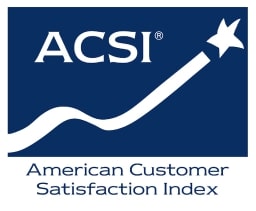With a few notable exceptions, we don’t get much ice or snow across our area during winter—especially not compared to other U.S. regions. We do, however, usually get more than our fair share of frigid air and frosted-over mornings during an average winter.
February’s cold (and sometimes January’s) can throw local heating systems into overdrive. As March rolls around, warmer temperatures tend to roll in with it, giving heaters a breather and providing welcome relief for our wallets—although not immediately.
Winter Electric Bills Disorientation
Suppose you receive your March bill on the first warm day of March. Your immediate reaction might be confusion. How can the bill be so much higher than average when the weather is so comfortable on the day you receive it? This feeling of disconnectedness arises from that fact that your March bill isn’t based on any temperate weather we may experience as the calendar changes. Instead, GVEC electric bills are based on a 30 or 31-day billing period. Most of the days in the billing cycle—if not all—will have occurred in February, not March.
Breaking Down Your Electric Bills
For a better understanding, look at the section of your GVEC bill marked “Service Dates.” These are the days on the bill you were actually charged for electricity use. You’ll see that the last day you were charged in the current billing cycle will be somewhere between seven and 14 days before the “Billing Date” (the day your bill is printed and mailed).
You’ll need to think back a little further, though, to fully understand how February and even late-January cold can affect your March bill. The bill for March may include weather that happened four to six weeks before the billing date. When you consider the big block of time that can separate the first few days of the billing cycle from the billing date, it’s not hard to see why relying on what the weather’s like in the days leading up to receiving the bill isn’t a good indicator of the amount of usage you’ll be charged for.
Why is My Bill Higher Than Normal?
GVEC is a “winter-peaking” cooperative. This simply means that winter is a time of year when we reach a maximum amount of overall usage at one time along our grid. This fact surprises many Cooperative members; however, it costs more to heat a home than to cool it. Although we don’t normally get much snow and ice in our region, the cold is enough to really drive up usage, which of course, can drive up the cost of your bill.
Taking all these factors into consideration, don’t be surprised if your March electric bill (covering February usage) turns out to be your highest of the year.
Take Greater Control of Winter Usage with GVEC
Just because winter weather tends to drive up electric usage in general, don’t think there’s nothing you can do to take greater control of your bill. GVEC offers a powerful online tool in the MyGVEC usage portal. All Cooperative members have access to it. MyGVEC can help you closely track usage, so you know how much electricity you use on what days, during what times and what the outside temperature was when you used it. You can also make usage comparisons between months, days, weeks and even times of day! But these are only the tip of the iceberg of what MyGVEC can do. To get started with it from a mobile device, just search “MyGVEC” on Google Play or the App Store. You can also use MyGVEC from a desktop computer by logging on through gvec.org.
Be sure to follow us on social media too, for tips on energy conservation and ideas for beating back cold weather usage. Find us on Facebook at @GVECsocial, on Instagram at @GVEC_INSTA and on Twitter at @GVEC_TWEETS. We also regularly offer advice on how to save energy here on our blog at gvec.org and in our monthly newsletter, The GVEC Review.



